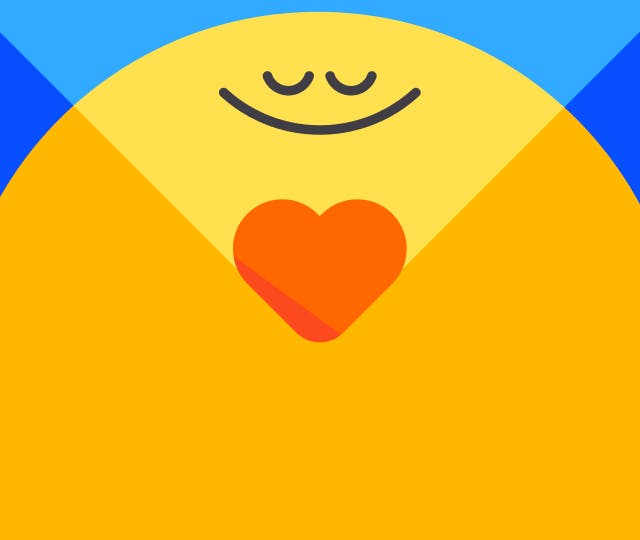The science of tickling
Dr. Claudia Aguirre
Oct 9, 2023
It starts with a giggle which quickly escalates into raucous laughter, desperate shrieks and attempts at running away. Sounds like you’re in the midst of a tickle fight. Whether you’re doing the tickling or being tickled, you’ve probably encountered the Tickle Monster at some point in your life. This strange and silly behavior is found in mammals including gorillas, mice and squirrels, yet it has stumped scientists for generations. There’s no easier way to break the ice with a toddler, but what could possibly be the point of succumbing to uncontrollable laughter while getting poked in the ribs or underarms?
In this article
Tickled pink
It turns out that tickling is much more complex of a behavior than we could imagine. In fact, it may even be a way to study human consciousness. Let’s start with the basics. There are two forms of tickling: knismesis and gargalesis. Knismesis is more of a light sensation that rarely produces actual laughter, like when a feather is run across your skin or a pesky fly lands on you. The other type, gargalesis, is the sensation you feel when someone else tickles you more aggressively. Try as you might, you can’t induce the same exhilaration and laughter, or even fear and irritation, brought about when another person tickles you if you try to tickle yourself. Go on, try it. Nothing, right?
We’ve only recently begun to understand this mechanism in the brain. Neuroscientists have revealed that we cannot tickle ourselves (the gargalesis type) essentially because we can’t surprise our own brain. During a tickle, the skin’s nerve endings shoot electrical signals to the somatosensory cortex, a part of the brain that processes touch. Meanwhile, the anterior cingulate cortex analyzes these signals as either harmful or playful. But in the back part of the brain, the cerebellum gives you away. It tells your cortex that you are about to attempt a self-tickle, and not to worry, it should suppress the signals from the tickle. So there is a brain system in place that analyzes the sensory input together with the motor output, basically telling us whether what we feel is due to ourselves or others. And in doing so, it also helps us understand how the brain separates “me” from “them.” In fact, some people with dissociative disorders like Schizophrenia can tickle themselves silly. Being able to differentiate the actions of others and ourselves is central to our sense of self.

"Laughter can induce gamma wave frequencies in the brain, which bolster the synchronicity of brain activity, a trait observed among experienced meditators."

Laughter is the best medicine
The act of tickling may have also given rise to laughter itself. Like yawning, laughter is contagious; it’s hard to hear it and not crack a smile. Laughter can attenuate stress hormones and boost mood-enhancing neurotransmitters. What’s more, laughter can induce gamma wave frequencies in the brain, which bolster the synchronicity of brain activity, a trait observed among experienced meditators. Top that with the calorie-burning power of a belly laugh and you’ve got yourself a prescription for health.
As we uncover how it works, scientists are also interested in why we tickle at all. One theory is that we evolved ticklish bodies to learn self-defense. The most ticklish places in the body – in between ribs and under the arms, for instance – are also those most vulnerable to physical attack. Perhaps we tickle our children to teach them how to shield those unprotected areas. Another theory places tickling firmly in the realm of social bonding. It’s one of the earliest forms of communication between parents and children, even before language sets in. During adolescence, tickling takes on a flirtatious tone, and after middle age it dramatically declines. Perhaps due to decreased opportunities or shunted sensorial responses that come with aging, the pleasurable agony of a tickle remains the stuff of childhood, at the root of our emotional being.


Be kind to your mind
- Access the full library of 500+ meditations on everything from stress, to resilience, to compassion
- Put your mind to bed with sleep sounds, music, and wind-down exercises
- Make mindfulness a part of your daily routine with tension-releasing workouts, relaxing yoga, Focus music playlists, and more

Meditation and mindfulness for any mind, any mood, any goal

Stay in the loop
Be the first to get updates on our latest content, special offers, and new features.
By signing up, you’re agreeing to receive marketing emails from Headspace. You can unsubscribe at any time. For more details, check out our Privacy Policy.
- © 2025 Headspace Inc.
- Terms & conditions
- Privacy policy
- Consumer Health Data
- Your privacy choices
- CA Privacy Notice








